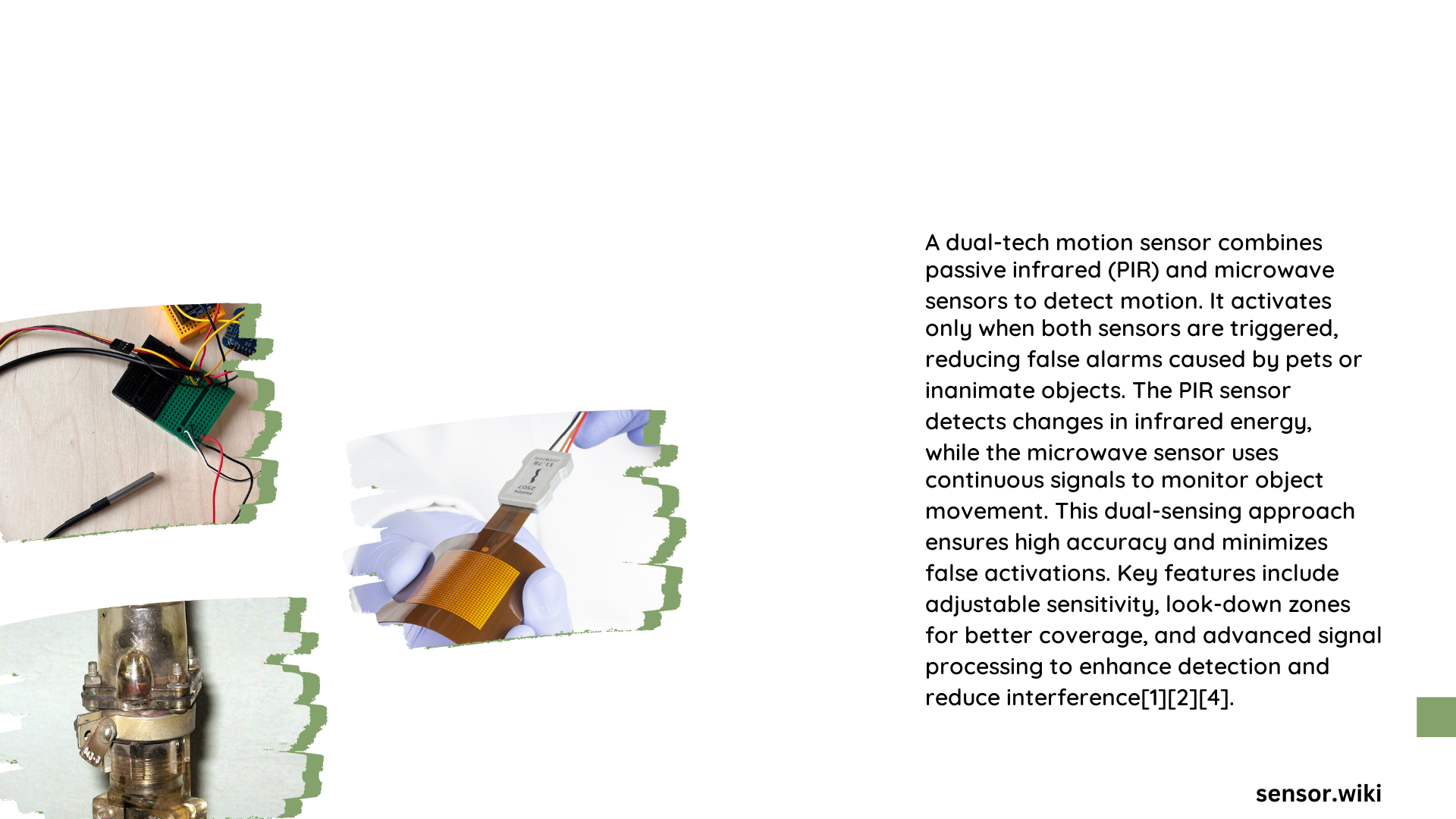Dual tech motion sensors represent a sophisticated technological solution that combines passive infrared (PIR) and microwave detection technologies to provide superior motion detection accuracy. These advanced sensors eliminate traditional detection limitations by integrating two distinct sensing mechanisms, ensuring reliable performance across diverse environmental conditions. By simultaneously utilizing heat signature and electromagnetic wave analysis, dual tech motion sensors dramatically reduce false alarm rates and enhance overall detection precision.
What Makes Dual Tech Motion Sensors Unique?
Dual tech motion sensors leverage complementary detection technologies to create an unparalleled sensing environment. Unlike traditional single-technology sensors, these advanced systems require simultaneous activation from both PIR and microwave technologies to trigger an alert.
Key Detection Characteristics
| Detection Method | Primary Function | Sensitivity Range |
|---|---|---|
| Passive Infrared | Heat Movement Detection | Low to Medium |
| Microwave | Electromagnetic Wave Analysis | Medium to High |
| Combined Approach | Comprehensive Motion Verification | High Precision |
How Do Dual Tech Motion Sensors Work?

The operational mechanism of dual tech motion sensors involves intricate technological interactions:
- Passive Infrared Detection
- Identifies heat signatures
- Detects temperature variations
-
Monitors thermal energy changes
-
Microwave Detection
- Emits electromagnetic waves
- Analyzes frequency shifts
- Measures object movement patterns
Where Can Dual Tech Motion Sensors Be Implemented?
Dual tech motion sensors find applications across multiple domains:
- Commercial Security Systems
- Intelligent Building Management
- Automated Lighting Controls
- Industrial Monitoring Environments
- Residential Safety Installations
What Are Installation Best Practices?
Mounting Considerations
- Optimal Height: 8-10 feet above ground level
- Maximum Recommended Height: 12 feet
- Clear Line of Sight: Unobstructed detection zone
- Avoid Direct Sunlight: Prevent interference
Technical Performance Metrics
Detection Range Specifications
- Indoor Range: 30-40 feet
- Horizontal Coverage: 90-180 degrees
- Temperature Tolerance: -10°C to 50°C
- Humidity Resistance: 10-90% non-condensing
Advanced Configuration Techniques
Sensitivity Adjustment Strategies
- Calibrate microwave sensitivity
- Set PIR threshold levels
- Configure time delay parameters
- Implement environmental compensation
Troubleshooting Common Challenges
Potential Detection Issues
- False Alarm Reduction
- Enable pet immunity features
- Adjust sensitivity thresholds
-
Minimize environmental interference
-
Performance Optimization
- Regular sensor cleaning
- Periodic calibration
- Environmental assessment
Future Technology Trends
Emerging dual tech motion sensor technologies are focusing on:
– Machine learning integration
– Enhanced AI-driven detection algorithms
– Improved energy efficiency
– Miniaturization of sensor components
Maintenance Recommendations
- Conduct quarterly performance assessments
- Clean sensor surfaces regularly
- Update firmware when available
- Verify wiring connections periodically
Cost-Effectiveness Analysis
Dual tech motion sensors provide superior value through:
– Reduced false alarm rates
– Extended operational lifespan
– Comprehensive detection capabilities
– Lower long-term maintenance expenses
Conclusion
Dual tech motion sensors represent a sophisticated technological solution for precise environmental monitoring, offering unparalleled detection accuracy and reliability across diverse applications.
